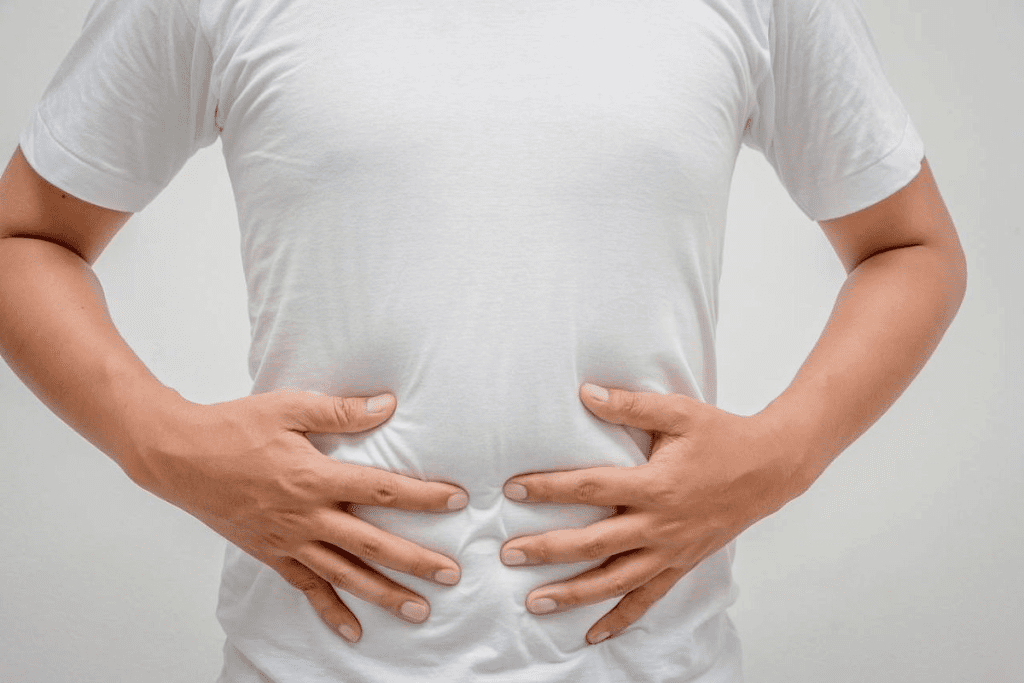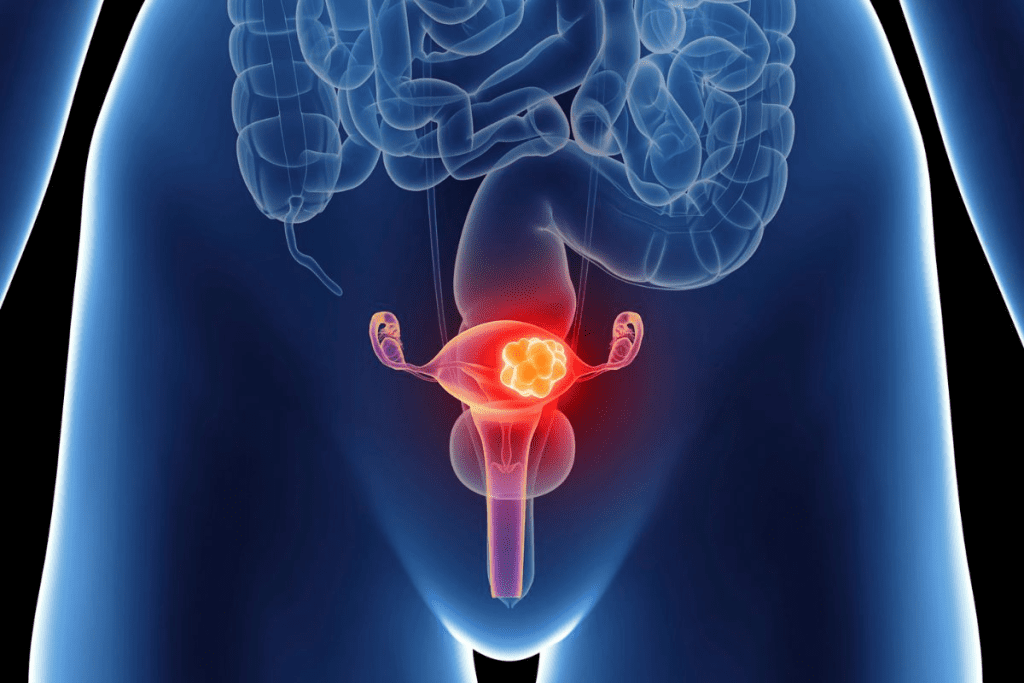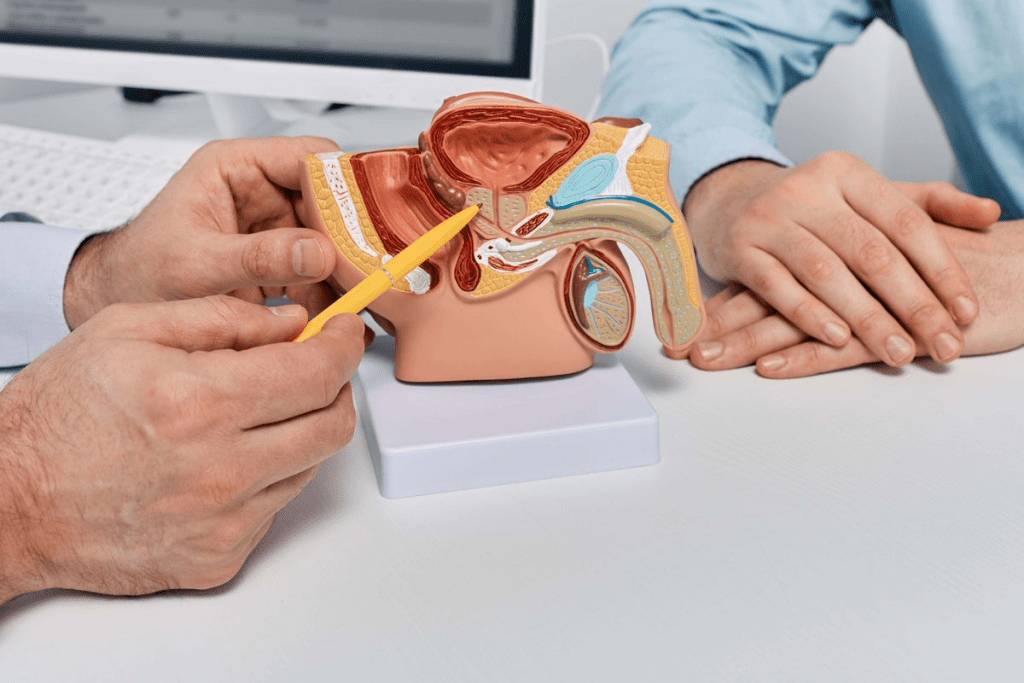Last Updated on October 31, 2025 by

An unhealthy bladder can really mess up your daily life and health. We often ignore the warning signs until they get really bad. Spotting these signs early is key to keeping your bladder healthy.
Signs include needing to pee a lot, sudden urges, nocturia (waking up to pee), and leaks. Some people feel burning or pain when they pee, or see blood in their urine. These signs might mean you have a bladder problem that needs a doctor’s help.
Sometimes, people also wonder how to make yourself pee when they feel uncomfortable or are having trouble urinating. Knowing when and how to do this safely can be important for bladder health.
Knowing these signs and getting the right care can really help your life. We’ll dive deeper into these symptoms to help you stay aware and take care of your bladder.
Knowing the basics of bladder health is key to staying well. The urinary system, which includes the kidneys, ureters, bladder, and urethra, helps remove waste. A healthy bladder is vital for storing urine until it’s time to go. Its health is linked to our overall health.

The bladder’s main job is to hold urine from the kidneys. When it’s full, nerve signals tell the brain it’s time to go. This process involves muscles and nerves working together.
For more tips on bladder health, check out 15 Tips to Keep Your Bladder.
Keeping the bladder healthy is key to avoiding bladder issues like incontinence and infections. By knowing how the bladder works and taking care of it, we can lower the risk of problems. Drinking enough water, practicing good hygiene, and listening to our body’s signals help a lot.
A healthy bladder also improves our quality of life. By focusing on bladder health, we can avoid infections and keep our independence and confidence. It’s important to take care of our bladder to stay well overall.
Knowing the signs of bladder problems is key to tackling them early. These issues can really affect your life quality. Spotting the warning signs is the first step to getting the right care.
Studies show many adults, mainly men over 40, face bladder control issues. Overactive bladder (OAB) is common. Symptoms include sudden urges to pee, losing urine without meaning to, and needing to pee often.
Needing to pee more than usual can signal bladder problems. If you pee more than eight times a day, it might be OAB or another issue. Drinking too much fluid, caffeine, or alcohol can make it worse. But if it doesn’t get better even after changing your drinking habits, see a doctor.
A sudden urge to pee can disrupt your day. It’s often linked to an overactive bladder. This can really upset your daily life. If you’re feeling this way, talk to your doctor. They can suggest treatments like therapy or medication.

Nocturia means waking up to pee often. It can be a sign of bladder problems or other health issues. It can mess up your sleep and health. Drinking before bed, sleep disorders, and medical conditions can cause it. If you’re waking up a lot, try drinking less before bed and see a doctor.
Urinary leakage or incontinence is a common bladder symptom. It can be from occasional leaks to sudden urges. Learning about urinary incontinence can help manage it. Treatments range from lifestyle changes to medical help.
If you notice these signs, see a healthcare professional. They can find the cause and suggest treatments. For example, if you pee too much, they might suggest ways to stop peeing so much or bladder training.
It’s also important to know the risks of holding your pee for too long. It might seem minor, but it can lead to infections or kidney damage. So, it’s key to talk to a doctor about your pee habits.
It’s important to know how holding urine can affect your bladder. Urinary retention happens when you can’t fully empty your bladder. This can cause pain and serious problems if not treated.
Holding urine too long can harm you in different ways. Short-term, it might hurt your lower abdomen. Long-term, it could lead to infections and damage to your bladder muscles.
Short-term effects include:
Long-term effects can be worse and include:
How long you can hold urine depends on many things. These include how much you drink, your health, and how big your bladder is. It’s best to go when you need to, to avoid holding it too long.
Things like age, weight, diabetes, and health habits can affect your bladder. Knowing these can help you avoid urinary retention.
Chronic urinary retention can cause big problems. These include UTIs, bladder stones, and kidney damage. If you have trouble urinating or other symptoms, see a doctor.
Some key complications to watch out for:
Good bladder health means paying attention to when you pee and getting help when needed. Knowing the risks of holding urine too long helps you avoid serious problems.
Urinary retention can be upsetting, but there are safe ways to help. At Liv Hospital, we care deeply about your bladder health and provide guidance on how to make yourself pee using new, proven methods to support your bladder.
Drinking enough water is a simple and effective way to help. It keeps your urinary system healthy. Increasing fluid intake can make your bladder work better. But don’t drink too much to avoid bladder overload. Knowing how to make yourself pee by staying hydrated is often the first step in managing urinary retention.
Other drinks like cranberry juice might also help, though their effectiveness varies. Caffeinated drinks can stimulate the bladder and help make yourself pee more frequently.
There are physical ways to help your bladder too. Relaxation techniques like deep breathing can be useful in learning how to make yourself pee when you’re struggling. Also, changing your position or standing up can encourage bladder release.
The double voiding technique is another method. You pee, wait a bit, then try again. This ensures your bladder is empty and is an important part of understanding how to make yourself pee effectively.
While these methods can help, use them carefully. If you have severe urinary retention or pain, see a doctor. These techniques on how to make yourself pee are not a replacement for medical care.
At Liv Hospital, we stress the need for professional medical advice. Our team is here to give you the best care for your needs.
Bladder problems are more common than you might think. They affect a large part of the world’s population. Understanding who is most affected can help in teaching how to make yourself pee when needed.
Men in America also face bladder problems. About 14.5% of American men deal with these issues. This number is growing due to aging and lifestyle changes, which makes knowing how to make yourself pee increasingly important.
Women are more likely to have bladder problems, with up to 61% affected. Several reasons explain this, such as body differences, pregnancy, and hormonal changes. Teaching women how to make yourself pee safely can help reduce some complications.
Age plays a big role in bladder health. As people get older, bladder problems become more common. Knowing how to make yourself pee and when to seek help is essential for managing these issues.
Looking at bladder problem statistics helps us understand the issue better. It shows who is most at risk. This information is key to creating effective treatments and prevention strategies for all.
Knowing the risk factors for bladder problems is key to staying healthy. By spotting these risks early, we can keep our bladders in top shape. This helps avoid bladder issues.
As we get older, our bladders change. The bladder muscle gets weaker, and it can’t empty fully. This might cause problems like not being able to hold urine or leaking. Knowing about these changes helps us manage our bladder health better.
Being overweight is a big risk for bladder problems. Extra weight puts more pressure on the bladder and pelvic muscles. This can cause leaks and other bladder issues. Staying at a healthy weight can help ease this pressure and lower bladder risk.
Diabetes can really hurt your urinary health. High blood sugar can damage the nerves controlling the bladder. This can lead to trouble holding urine or leaking. Keeping diabetes under control is key to avoiding bladder problems.
Some medicines can mess with your bladder. Drugs like diuretics make more urine, while others relax the bladder muscle. It’s important to know how medicines might affect your bladder if you’re at risk.
By knowing these risk factors, we can prevent and manage bladder issues better. It’s vital to understand how age, weight, diabetes, and medicines can affect our bladders. This way, we can take steps to keep our urinary system healthy.
Keeping our bladder healthy is key to feeling good. There are simple steps we can take every day to avoid bladder problems. By making these habits part of our routine, we can lower the chance of bladder issues and keep our bladder in top shape.
Drinking enough water is vital for a healthy bladder. When we drink enough, our bladder works properly, and we’re less likely to have bladder problems. But too much water can also be a problem. We should aim for 8-10 glasses of water a day, adjusting as needed.
Here are some tips to stay hydrated:
Some foods and drinks can make our bladder unhappy. By avoiding or cutting down on these, we can help keep our bladder healthy. Common troublemakers include:
By watching what we eat and avoiding these irritants, we can lower the risk of bladder problems and keep our bladder healthy.
Kegel exercises are a simple way to strengthen the muscles that control our bladder. This can help us control our bladder better and reduce the chance of leaks.
To do Kegel exercises, follow these steps:
Bladder training helps us hold our urine longer by gradually increasing the time between bathroom visits. This can help us pee less often and improve bladder control.
To start bladder training, follow these steps:
By adding these daily strategies to our routine, we can greatly reduce the risk of bladder problems and keep our bladder healthy.
Maintaining bladder health is all about being aware and taking action. Knowing the signs of an unhealthy bladder is key. By learning how to naturally stimulate urination, you can manage issues like urinary retention.
Preventive steps are important too. Drinking enough water, doing pelvic floor exercises, and training your bladder can help. If you have a weak urine flow, there are natural ways to improve it. We suggest trying these methods to boost your bladder health and life quality.
Being proactive and getting medical help when needed is vital. This way, you can avoid bladder problems and keep your urinary system working well. Taking care of your bladder is a big step towards feeling better overall.
Signs of bladder problems include needing to pee a lot, sudden urges, waking up to pee, and leaking urine. If you notice these, see a doctor for help.
Drinking water and using a warm compress on your belly can help. But, if you have a blockage or other health issues, don’t try these.
Holding urine too long can cause infections, kidney damage, and bladder problems. It’s okay sometimes, but not all the time. If you can’t pee for a long time, see a doctor.
Age, being overweight, diabetes, and some medicines can harm your bladder. Knowing these risks helps you stay healthy.
Drink enough water, avoid bad foods, do pelvic floor exercises, and train your bladder. These habits can help keep your bladder healthy.
Try bladder training to go longer between bathroom trips. Pelvic floor exercises can also help control your bladder.
Clear urine means you’re drinking enough water, but it can also mean other things. If you’re worried, talk to a doctor.
How long you can hold urine depends on how much you drink and your health. Try to pee when you need to. If you can’t pee for a long time, see a doctor.
Yes, women and older people are more likely to have bladder problems. Childbirth and age can affect your bladder.
Subscribe to our e-newsletter to stay informed about the latest innovations in the world of health and exclusive offers!